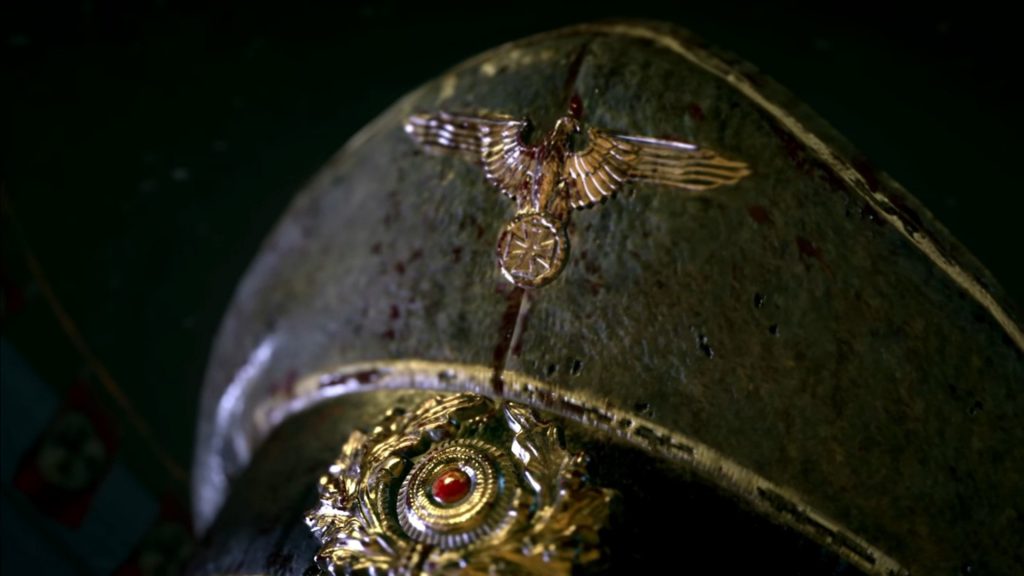Video Gamer is reader-supported. When you buy through links on our site, we may earn an affiliate commission. Prices subject to change. Learn more
There’s something brilliantly neurotic about nazi zombies. It’s as if the developers of Call of Duty felt it necessary to apply a pain reliever to our moral aches. It wasn’t enough to have one of history’s greatest villains as footslogging fodder; they required a further extermination of soul. We had to be freed from any last nagging scraps of guilt as we pulled the trigger for the umpteenth time. The lily needed gilding with gore.
It’s the ultimate reversal of the trick Cannon Fodder pulled 15 years before Zombies’ debut, marking its legions of pixel people with names and graves, glimpsed in the screens between battles, and thus making you feel like a farmer forced to name the cattle headed for the abattoir. ‘War,’ ran the tagline, ‘has never been so much fun.’
That’s seemingly the sentiment Treyarch took to heart in 2008, when it developed Call of Duty: World at War. While Infinity Ward’s monumental Modern Warfare loomed in the smoke of the Iraq War, World at War saw us cheerfully booted back to the slurried beaches of World War II, a conflict long seeped in sepia and enshrined in the annals of Hollywood. And sure enough, the tinselled talent of Gary Oldman and Kiefer Sutherland chivvied us along while we rollicked round the Pacific theatre, as if under the watchful eye of Steven Spielberg. But the war film wasn’t the only trove of movie lore Treyarch looked to; its second strain of inspiration came from George A. Romero.

Call of Duty’s Nazi Zombies mode celebrates its ten-year anniversary next month. After sinking its teeth into World at War, it spread to the Black Ops series, went airborne and appeared in Advanced Warfare and WWII, before leaving the Earth behind and rearing its head in Infinite Warfare. Each iteration bore new symptoms: ray guns, zombies encrusted with Exo Suits, and storylines stapled on. But despite the mutations, the undying appeal of Nazi Zombies can be traced to its sparse first episode, Nacht Der Untoten – ‘night of the undead.’
Its name denotes its debt. Everywhere there are traces of the bare-boned Romero approach. Four unknown United States Marines, an abandoned airfield bunker with two floors, and nauseous waves of walking corpses: if it didn’t sound so much like Night of the Living Dead, it would sound like a new reality TV show, from a network ravenous for ratings. Its charms, however, lie in the churn of its gameplay.
The germ of inventiveness in Nazi Zombies, and the reason, I suspect, for its incurable popularity, is that its shuffling armies are caught in a crosswind of genres. The controlled forest fire of a good horde mode – broken by countdowns and bolstered with barricades – enforces its frenzy with the cunning ferocity of its enemies. The horde mode in Gears of War is filled with Locust, who pelt toward you with furious impatience; Halo’s Firefight is crammed with Covenant, whose snipey elites and ruthless brutes blindside and bombard you.

Not so with Nazi Zombies, whose cadavers stumble with clumsy inevitability, breaking into a lopsided jog as if hooked on your scent. They’re no grave threat. It’s an action set-up filled with horror game ghouls; only, the frailties of horror genre heroes are dismissed. You’re no doughty civilian, no brittle cop fumbling in the dark for green herbs. You’re a soldier, and what’s more, you’re gifted the powers of Call of Duty: Behold the blistering whip of your aim as each crusty head falls into the iron grip of your gunsight, or the frictionless way you move, like the slide of a semi-automatic.
Where then comes the nerve-fraying tension? The assault is mounted, as was Romero’s, with one eye fixed on the bigger picture: perhaps you can fend off the ghouls inching toward you with time to spare, but what about the next group, or the twenty after that? Instead of using that hydrochloric tension, as Romero did, to unspool the psyches of his subjects and infect their heart with hopelessness, it numbs and gnaws at the excesses of Call of Duty. The brimming crates of ammunition, the breakneck speed of movement, your regenerating health and immunity to infection: all these little advantages stack up like sandbags against the flood. They won’t last long.
Indeed, much of my limited time (expect a full review early next week) with Black Ops 4's Zombies mode has been spent in the excellent Voyage of Despair, which sees a team of adventurers try and pull off a heist aboard the Titanic. Is there any better setting for a Zombies mode? As you open new corridors and bargain your way to bolstered firepower, occult artifacts grant you powers beyond the paygrade of even Soap MacTavish. But still the tide encroaches inch by inch. Your death may not arrive icy and soaked through, but it comes just as fated as any of the souls on board.
Ever since they welled out of Infogrames’ solitary darkness, zombies have been ubiquitous in games. They’ve lumbered their way through horror, into action and platformers; they’ve backlit narrative adventure games and added menace to platformers. It might be tempting to label the success of Nazi Zombies as obvious, as money in the bank: gaming’s most dominant shooter packaged with its most pervasive foe. But it’s more complex than that, and at the same time, it’s more simple. Zombies have never been so much fun.

